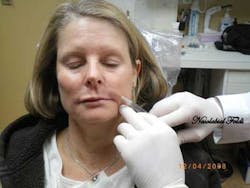Scheduling for success
By Mark Absher, BS
There are three ways to increase a dentist’s productivity — work more hours, charge higher fees, or work more efficiently. Over the past 30 years I have learned that working more hours can burn out the dentist and team and make them less efficient, and fees that are too high can turn potential patients away in a competitive market. While the number of hours we work and fees we charge are worth investigating, working more efficiently provides the most bang for the buck. There is no area where this is truer than with our daily schedules.
Our office has developed a simple and effective method to help ensure scheduling success and improved profitability. First, we categorize all of our procedures into Class I or Class II. It’s up to each of you to determine which procedures are designated Class I or Class II, but we define Class I as our high-income or high-potential-producing procedures, and Class II as our potential less-income procedures.
Class I procedures include:
- Preps
- Seats
- Restorative
- Removable
- Comprehensive exams
- Final engineering
- Interview and initial exam
- Consultation
Class II procedures, while necessary, are difficult to charge a very high fee and in some cases are done at no charge. Some Class II procedures can be done by an auxiliary staff person.
Class II procedures include:
- Re-cement
- Toothache
- Hygiene exam
- Bleaching
- Bite adjustment
- Deliver bite appliance
- Bonding repair
- Office visit
- X-ray
- Divide schedule into Class I and Class II columns.
- Determine your Class I and Class II procedures.
- Fill the Class I column with high-potential productive procedures only.
- Limit Class II procedures to one per hour.
- Preblock long appointments and new patient time slots.
- Remove preblocking if not filled within two weeks.
The “scheduling for success” system is simple and very effective in helping to ensure profitability. Designating Class I and Class II procedures, along with preblocking important procedures, will become the preplanned destiny of your practice.
Author bio
Mark Absher, BS, has been office manager and marketing director in the Arlington, Texas, dental practice of his wife, Dr. Susan Hollar, since 1982. Prior to that he was a systems analyst and computer programmer, where he designed and implemented many successful business systems. He is devoted to dental practice management, Web site design, and digital photography. Mark is co-owner of DentalOptimization, a Web site development company catering exclusively to restorative and cosmetic dentists. Mark can be reached at [email protected].




